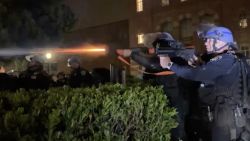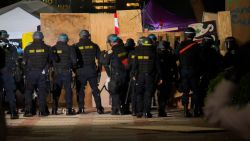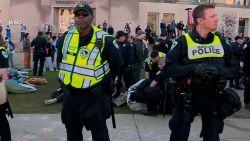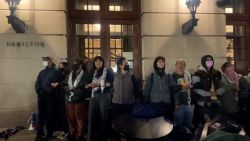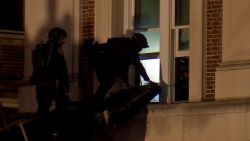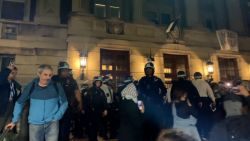The prosecution in the trial of Ahmaud Arbery’s killing rested its case Tuesday afternoon after eight days of testimony and 23 witnesses.
Three White men – Gregory McMichael, his son Travis McMichael and their neighbor William “Roddie” Bryan Jr. – are accused of chasing down and killing Arbery, a 25-year-old Black man, on February 23, 2020, in the Satilla Shores neighborhood, just outside the city of Brunswick, in Georgia’s low country.
Arbery’s family has said he was out for a jog when he was shot and killed. Defense attorneys contend their clients were trying to conduct a lawful citizen’s arrest of Arbery, and Travis McMichael shot Arbery in self-defense as they wrestled over Travis’ shotgun.
The jury has heard transcripts of interviews from all three of the accused, along with several clips of cell phone video of the shooting, and a frame-by-frame showing of the video.
Without the jury present on Tuesday, Bryan testified about the conditions of where he has been held since he was arrested last year, as part of his defense’s reconsideration motion regarding a speedy trial. Bryan said he was being held at a protective unit at the jail with limited access to showers and outside recreation and that he has been living in fear due to the pandemic.
The judge denied the motion.
Jurors hear from forensic pathologist who conducted autopsy
Earlier Tuesday, the state called several witnesses, all employed by the Georgia Bureau of Investigation, to help explain evidence in the case entered into record.
Among them was Assistant Special Agent in Charge Richard Dial, the lead GBI investigator, who testified on the timeline of events in the case, once the state was requested to conduct an investigation on May 5, 2020.
Prosecutors presented maps showing the path traveled by Arbery and the defendants on the day of the shooting. They also showed the jury drone videos, taken by the GBI, of the area where the shooting happened, with Dial explaining what the drone video showed as it played in court.
Jurors also heard from GBI forensic pathologist Dr. Edmund Donoghue – the man who performed Arbery’s autopsy – detailed Arbery’s injuries as jurors saw graphic photos from the examination.
Donoghue’s autopsy report from April 2020 did not detail the order in which Arbery’s gunshot wounds happened. But he testified Tuesday he could do so now, combining the autopsy with widely seen cell phone video taken by Bryan. Arbery and Travis McMichael can be seen in the video wrestling over the firearm before the shooting.
Though three shots were fired, only the first and third struck Arbery, Donoghue testified. The first not only grazed his right wrist – hitting an artery and causing severe bleeding – but also struck his center chest, he said.
The third shot struck his left chest and armpit, hitting his axillary vein and axillary artery, Donoghue testified.
While a tourniquet could have remedied the wrist injury, nothing could be done on scene to save Arbery’s life after either of the torso wounds, Donoghue said.
Prosecuting attorney Linda Dunikoski asked whether Arbery’s first set of injuries – the wrist and chest being hit by the same shot – could be “consistent with someone pushing a shotgun away from them” or “consistent with someone maybe grabbing the shotgun.”
“It could be, yes,” Donoghue answered to both questions.
Donoghue testified he initially thought the distance between the gun and Arbery’s body was 3 to 4 feet when the gun was first fired, because he had not yet seen the cell phone video. However, having seen the video, he now believes the distance was 3 to 20 inches, or “close-range to near-contact.”
That dovetails with testimony from Monday, when a GBI firearms examiner testified Arbery was shot at close range.
The final shot effectively paralyzed Arbery’s left arm because it injured a complex of nerves. Donoghue pointed to video of Arbery’s hand, which had rotated to a position that indicates “Erb’s Palsy,” the type of nerve injury Donoghue said Arbery suffered.
In cross-examination, Donoghue testified he could see Arbery’s hand on the shotgun in still frames taken from the video.
And, he testified, even after the first gunshot wounded his wrist and chest, Arbery was able to hold onto the gun with one hand and hit Travis McMichael with the other, citing the video evidence.
An autopsy report, written by Donoghue, lists the manner of death as “homicide.” Arbery died “of multiple shotgun wounds sustained during a struggle for the shotgun,” the report says.
Thirteen shotgun pellets exited Arbery’s back, and 11 more were recovered from his wounds, the report says.

Judge denies defense motion to track courtroom gallery visitors
Kevin Gough, the attorney for Bryan who apologized last week for arguing “we don’t want any more Black pastors coming in here” to potentially influence the jury, again raised concern Tuesday about who is allowed in the courtroom’s public gallery during trial.
Gough’s string of complaints began last week after the Rev. Al Sharpton joined Arbery’s parents and held their hands to pray together during a break in court proceedings. Gough objected again Monday, when civil rights leader the Rev. Jesse Jackson made his first appearance in the gallery of the courtroom in support of the Arbery family.
Gough filed a motion asking the court to keep a record of who appears in the courtroom, in case any of the three defendants are convicted and an appeal is filed. Gough also asked the court to “take proactive measures” to make sure the presence of people in the gallery do not violate his client’s rights.
The judge denied the motion Tuesday, saying the court is not going to single out any particular individual or group of people, or restrict members of the public from attending court, as long as no one presents a distraction.
Jackson visits courthouse for second day
Jackson spent a short time Tuesday in the courthouse’s overflow room before speaking to reporters outside, alongside Arbery’s father.
Having been in the courtroom on Monday, Jackson wanted to support the family without becoming a distraction, a source close to Jackson told CNN.
Outside the courthouse Tuesday, Jackson said Arbery’s family “has withstood lots of pain,” and the details and pictures displayed in court were “a lot to take.”
Sharpton has a rally and a march planned for Thursday, and Jackson has said he plans to be in court during the week.
Monday, Judge Timothy Walmsley said the court’s position – not making any blanket rules over attendance as long as everyone is respectful in court – had not changed. “It’s almost as if you’re just trying to continue this for purposes other than just bringing it to the court’s attention,” he said to Gough.
Walmsley on Monday called some of Gough’s previous comments “reprehensible” and stressed to all the attorneys their words were having an impact. He told them they needed to understand “that your words in this courtroom have an impact on a lot of what’s going on.”
Previous testimony
The McMichaels, according to their attorneys, were trying to conduct a citizens arrest on Arbery, whom they suspected of burglary after neighbors became concerned about people entering an under-construction home.
The confrontation came minutes after a neighbor called police to say Arbery was at the construction site alone that afternoon. Gregory McMichael, investigators testified, said he initiated the pursuit after seeing Arbery run speedily by McMichael’s home, and he believed Arbery matched the description of someone who’d been recorded at the construction site before.
The prosecution has said videos do show Arbery at the site multiple times, including the day he was killed, but always without breaking in and without incident.
However, prosecution witnesses have testified McMichael did not know at the time of the chase that Arbery was at the site that day, or whether the man in the surveillance videos had ever taken anything from the construction site.
The owner of the under-contstruction home, Larry English Jr., testified in a September deposition – played for jurors last week – that he “probably” had told the McMichaels about incidents on his property. But English said he never authorized the McMichaels to confront anybody on the construction site.
Bryan, who joined the McMichaels’ chase in his own vehicle, recorded cell phone video of the pursuit and shooting. Prosecutors contend he struck Arbery with his vehicle during the pursuit.
In addition to malice and felony murder, the defendants also face charges of aggravated assault, false imprisonment and criminal attempt to commit a felony. All have pleaded not guilty. If convicted, each man could face life in prison without the possibility of parole.
CNN’s Christina Maxouris, Travis Caldwell, Joe Sutton, Jason Morris, Ryan Young, Pamela Kirkland and Orlando Ruiz contributed to this report.








